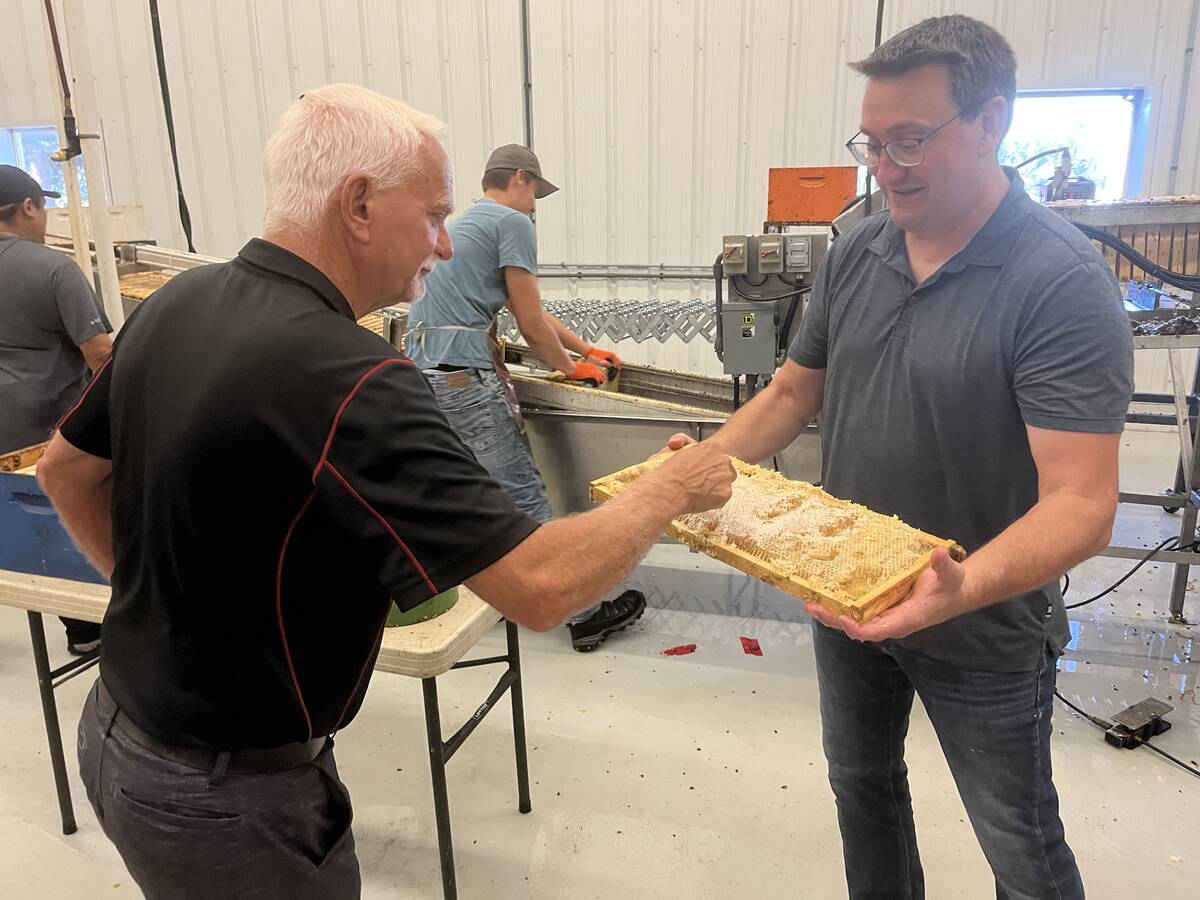MUENSTER, Sask. – The solutions to revitalizing Canadian rural communities all involve using local resources, said three Americans at a conference here last week.
The best jobs in a rural community are those created from within, say two rural sociologists.
Cornelia and Jan Flora of Iowa State University have studied rural communities in Latin America, as well as the United States.
“Things happen around a shared positive identity,” said Cornelia. “If we feel like victims, it won’t happen.”
A good attitude allows innovation to bloom and gives communities the ability to look at different solutions to problems.
Read Also

Alberta honey business ‘thrives’ despite bumpy beginnings
Thrive Honey showcases its honey production in market where Alberta produces 40 per cent of all honey produced in the country
Rudy Radke, an agrologist from North Dakota, said farmers must band together and move “up the food chain” to capture dollars and markets. Commodity production is not paying off any more. The future for grains and oilseed producers in the northern plains “is pretty bleak,” he said.
With the terrorism attacks diverting dollars into security, Radke predicted the next U.S. farm bill will have fewer dollars to subsidize agriculture. Individual farmers must form alliances to pool their production and buying power.
“If we don’t do it with farmers, then large grain companies will and they’ll contract for identity-preserved grain. There’s more strength with 800 farmers than just one, no matter how big.”
Radke said a General Mills executive recently told a group of farmers in his state that within five years it will be contracting for half of its grain needs. The cereal maker wants specific varieties of grain that offer consistent baking qualities whether that is uniform elasticity to ensure Cheerio dough does not plug up the pipe, or that Wheatie flakes curl rather than lie flat.
As the processors move to demand specific varieties, farmers may have to buy different machinery, software, trucks and storage. The present grain infrastructure system may not be as nimble or as ready to segregate the grains and varieties demanded from the lower-priced bulk commodities.
Radke said farmers considering alliances must be prepared to lose some of their decision-making ability, accept different scheduling than they are used to, and allow more time for record-keeping and communication with their partners.
Part of alliance building is making room for others. Saskatchewan will not attract thousands of Californians, said Cornelia Flora. But it is a place where people share the same values and get their identity. Her husband Jan said successful communities are known as good places to live. But they also have appropriate infrastructure, which not only means roads and sewers, but also schools and places for people to come together.
Success also comes from finding a balance between financial and social capital and being a district that reaches out for new ideas rather than government grants. Jan said Latin American communities develop entrepreneurs by using a mix of the market, the state and civil society. If there is no cash, success comes from being able to make things work through innovation.
Agriculture is a prime example of how “short-term government remedies turn out to be long-term deterrents to change,” said Cornelia. The U.S. farm subsidies are not financially or environmentally sound, she said.
The people who get the money are not the ones growing the crops but the landowners and the big grain companies. Jan added that the U.S. policy climate must change “so it is more amenable to farmers producing locally and environmentally and encouraging a diverse response.”
The Floras, who live in Ames, Iowa, surrounded by huge monocropped fields of corn and soybeans, said agriculture should follow an industrial model and learn to make different products for various consumers.
















